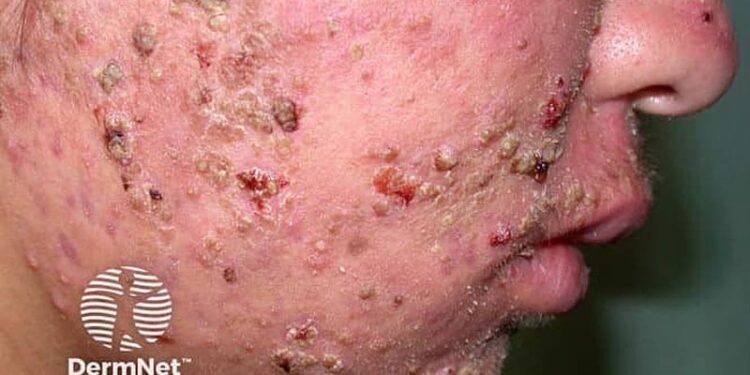When acne debuts as acne fulminans — acne that manifests as an explosive worsening and ulceration of skin lesions and can be associated with systemic symptoms — heritability is a likely culprit.

“There have been many studies showing us that it can run through families and there is in fact a greater than 3-fold risk with affected first-degrees family members,” Dawn Eichenfield, MD, PhD, assistant professor of dermatology at Rady Children’s Hospital and the University of California, San Diego, said at the annual Maui Derm Hawaii conference. “There are also many studies of twins that support this heritable nature.”
To examine the natural history and heritability of severe acne with scarring in patients undergoing isotretinoin therapy, researchers conducted a study of 101 patients with severe acne, including acne fulminans. They interviewed patients and adult family members about their acne and performed “historical” and “examination” Investigator’s Global Assessment Scores. The mean onset of acne was 12.6 years of age, most (79.2%) were male, and most lesions (90.2%) were located on the face.
“Severe acne formed a little later, around age 14,” said Eichenfield, who was not affiliated with the study. The researchers also found that 50%-60% of patients had family members with severe acne, mostly hemorrhagic lesions, “the kind that that we are always afraid of [causing] scarring,” she said.
Acne fulminans is also associated with certain medications, including oral retinoids, androgens, and antibiotics. In addition, it presents as a dermatologic finding in some syndromes, including synovitis, pustulosis, hyperostosis, and osteitis (SAPHO); autoinflammatory syndromes such as pyogenic arthritis, pyoderma gangrenosum, and acne (PAPA); and pyoderma gangrenosum, acne, and suppurativa hidradenitis (PASH).
In a 2023 study, researchers evaluated the demographic factors of acne fulminans in 212 patients identified in a literature review. Most (91.9%) were male, mean age was 16.6 years, 97.6% reported a positive personal acne history, and 56.9% reported a positive family acne history. In other findings, the researchers observed that more patients with acne fulminans had systemic symptoms (59%), especially fever (80.6%) and musculoskeletal manifestations (88.37%), typically bone abnormalities.
Another study of 21 adolescents with acne fulminans and severe cystic acne found lytic bone lesions in 10 (48%) patients, and 14 (67%) had increased uptake on bone scans. Common locations were the sternum and clavicles. The researchers found that the bone abnormalities normally resolved after treatment, with possible sclerosis or thickening.
According to evidence-based recommendations, acne fulminans is generally characterized into one of four categories: acne fulminans with systemic symptoms such as fever and lab abnormalities; acne fulminans without systemic symptoms; isotretinoin-induced acne fulminans with systemic symptoms; and isotretinoin-induced acne fulminans without systemic symptoms.
Eichenfield advises clinicians to “be fearless” when working up acne fulminans. Recommended labs include a CBC, ESR, CRP, and LFTs. “I will get a CMP most of the time because I want to see how their kidneys are doing, but usually the kidneys are not affected,” she said. “If you’re going to use a systemic medication, you’re going to want to know whether or not the patient is pregnant and [consider] a radiograph to look for the body lesions.”
Eichenfield disclosed being a speaker, consultant, and/or an investigator for several pharmaceutical companies. She has also received support from the Dermatology Foundation.
Source link : https://www.medscape.com/viewarticle/heritability-strongly-linked-acne-fulminans-2025a10001fq?src=rss
Author :
Publish date : 2025-01-21 22:48:44
Copyright for syndicated content belongs to the linked Source.














